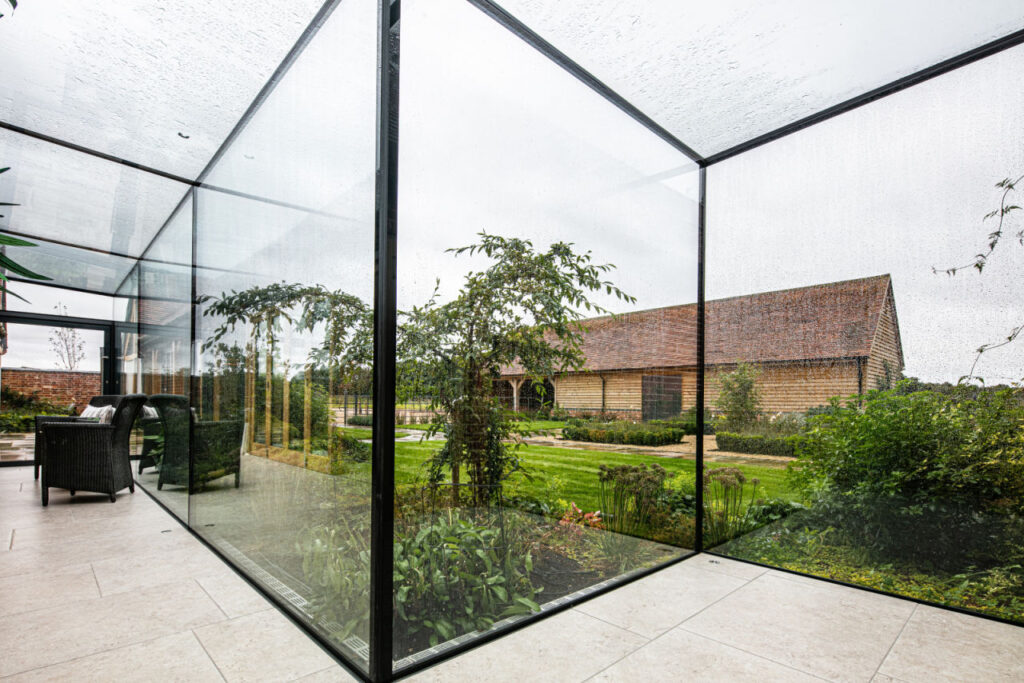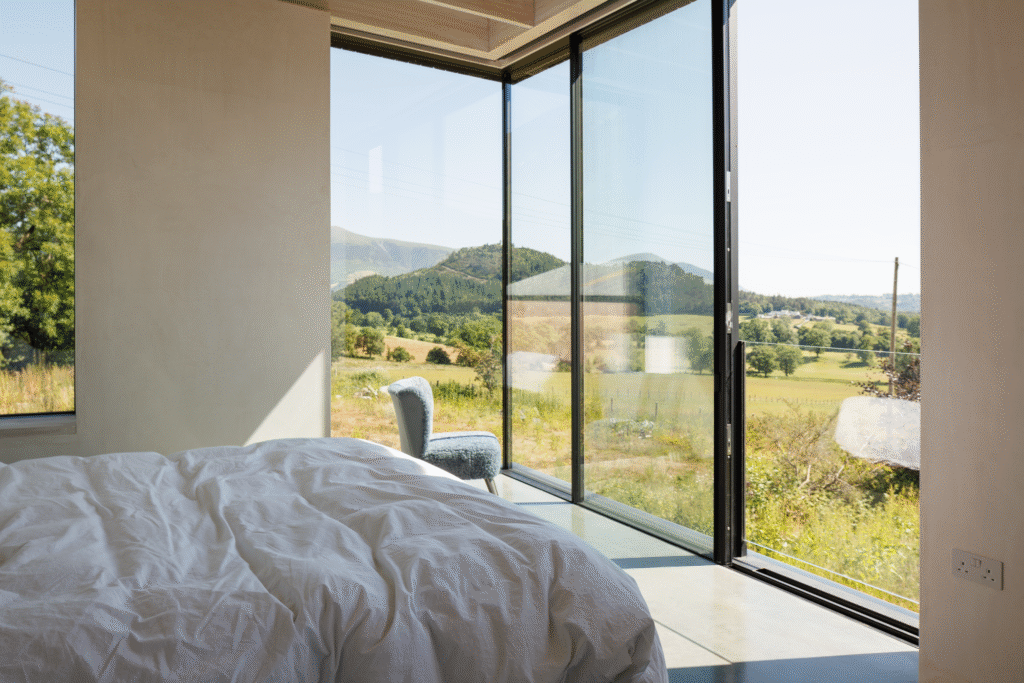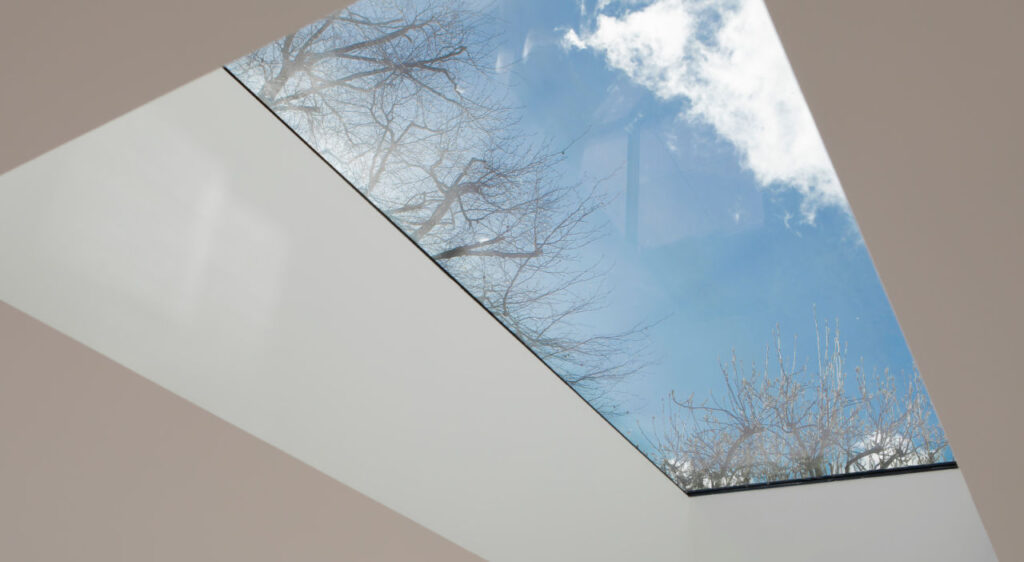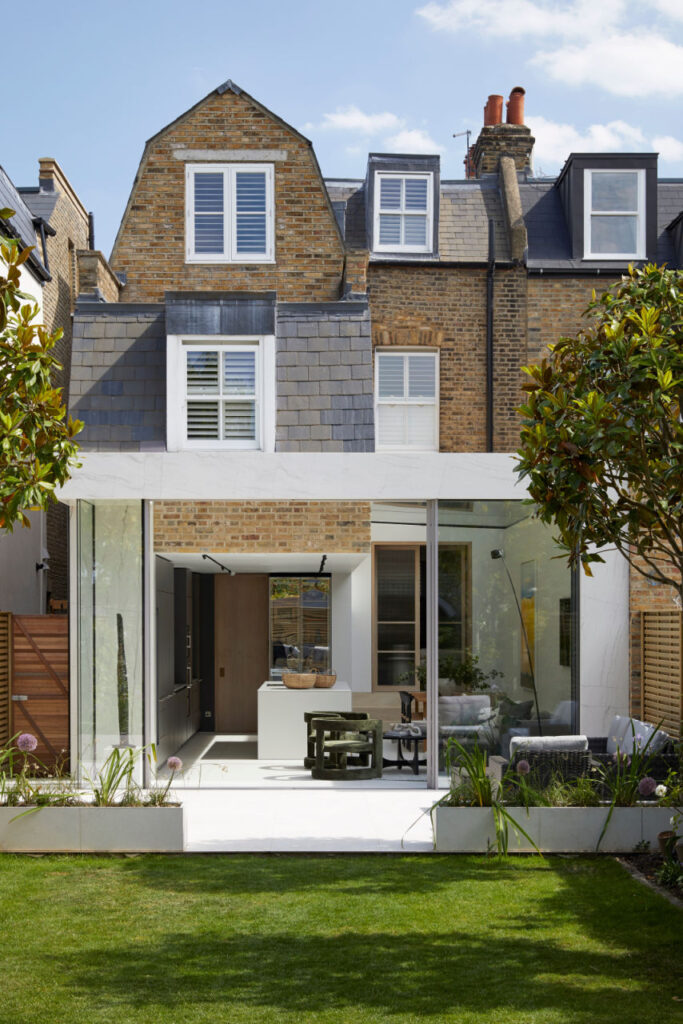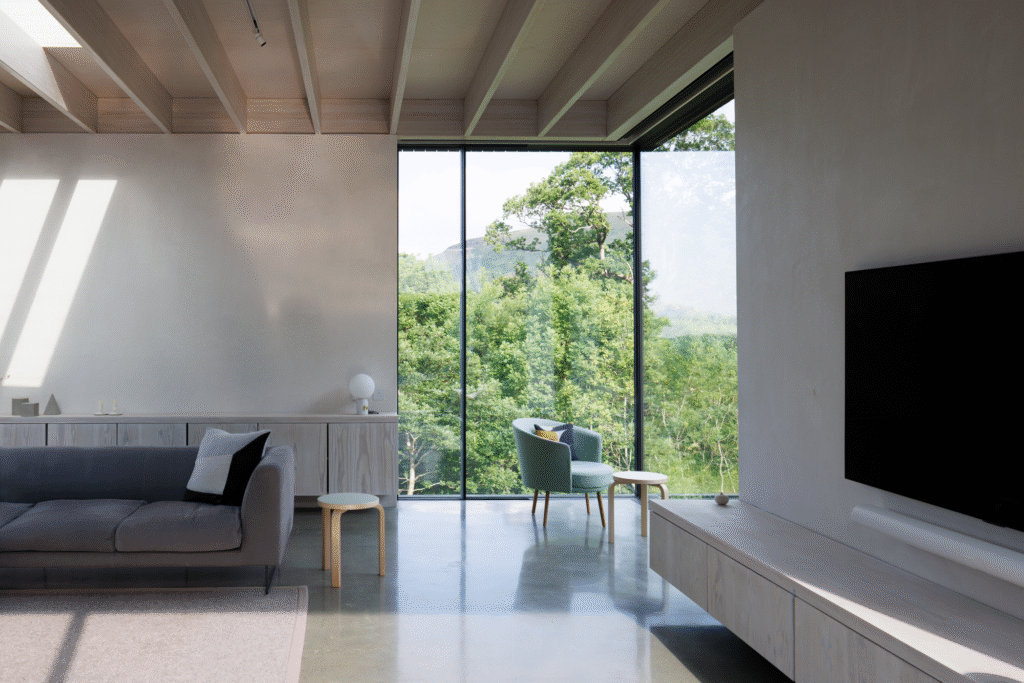Beyond Walls: How Internal Glazing is Redefining Modern Interiors
When creating the dream home, whether that be by renovation, self building or extension work, there are few features that can offer the elegance and sleek modern style of internal glazing.
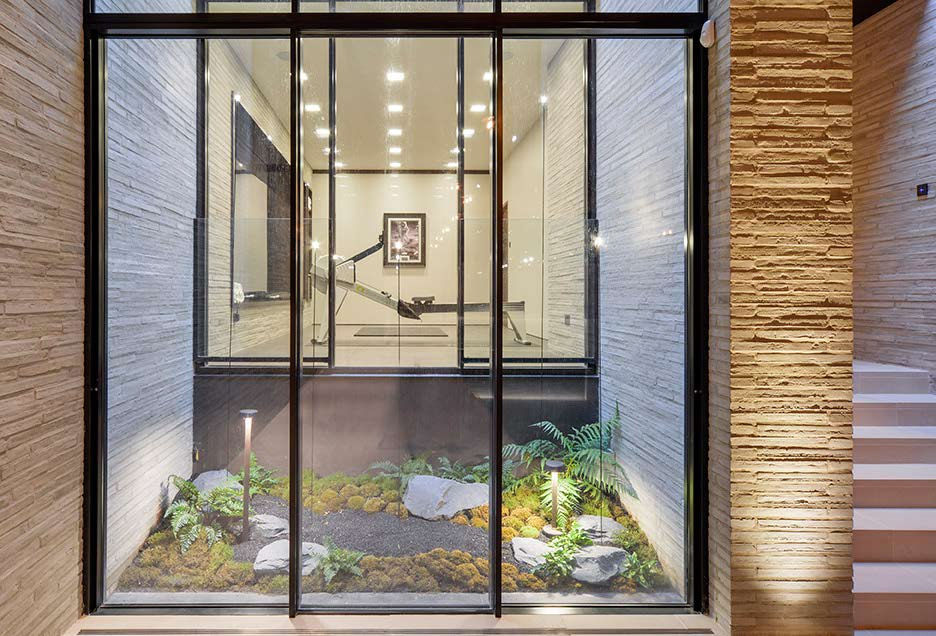
In this blog post we will be exploring the power of internal glazing, from minimal frameless glass partitions, to spiral glass staircases, there is truly something for every home.
What is internal glazing?
Internal glazing is a term that covers any form of glass feature that is used within the interior of a building, such as the home. But this is so much more than just windows and glass doors. It can take the form of huge glass partitions, minimalist glass stair railings (or even the stairs themselves) mezzanine and balustrade glass, all the way to glass flooring options to really open up a space.
As well as being used merely for its aesthetic appeal, internal glazing features are commonly chosen for their ability to open up a room to natural daylight, or to create an openness to a series of connecting spaces. By using glass, you can create flow and light, without having to sacrifice on noise control or safety, and you still have the ability to delineate each space from one another.
Whether used for structural, practical or decorative purposes, internal glazing has been growing in popularity since the invention of structural glazing. Fixed glass panels, minimal framing and frameless installations and advances in safety glass, have all meant that it can be used widely throughout the home, as well as in commercial and public buildings, offering a safe, eyecatching and effortless way to modernise the interior, all while letting life-enhancing natural light to filter in from the outside world.
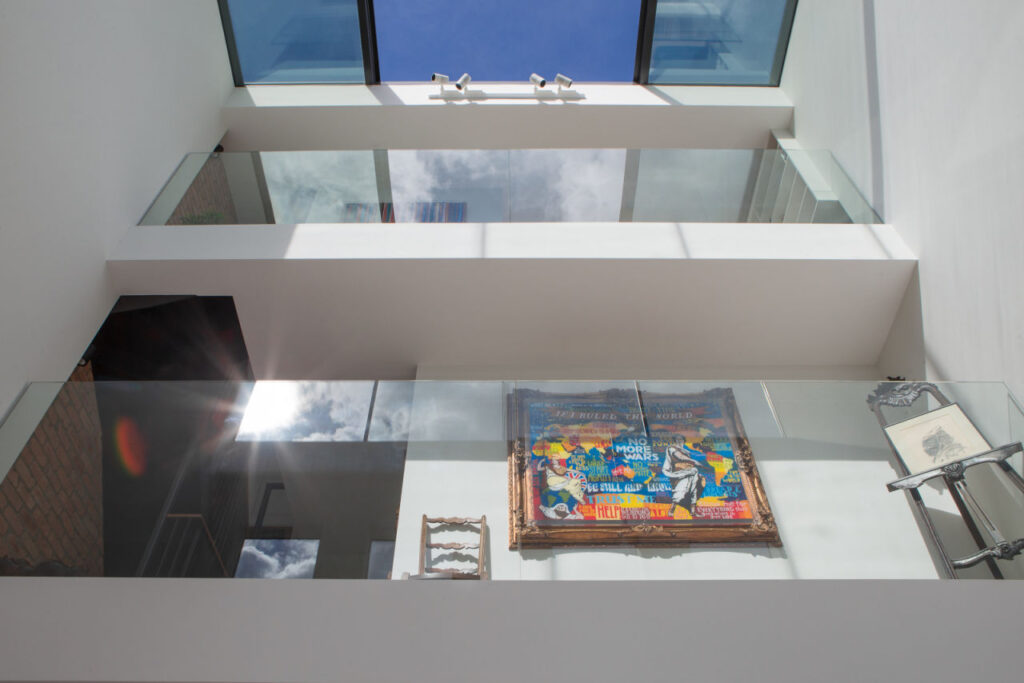
The wonders of balustrade glass
A feature that is becoming increasingly popular in modern homes, is that of the mezzanine level. By offering split level floors, or creating airy light wells, these offerings can open up the living spaces within the home, making even the most modest of houses feel expansive and light. For these to work effectively, there needs to be as minimal obstructive materials used as possible, which means balustrade glass is a must. Commonly used for staircases and internal balconies, balustrade glass acts as a safety barrier without being visually distracting – or obstructive. Unlike traditional bulky metal or wooden railings or solid walls, balustrade glass provides uninterrupted sightlines: a perfect scenario for both hyper minimalist modern homes, and classic heritage architecture, where you want nothing to distract from the original character of the building.
But don’t let the minimalist glass fool you, there is a lot going on under the surface of modern balustrade glass. It is most commonly made from toughened or laminated safety glass, with added innovations to make it ideally suited to the requirements of its location. And it is remarkably versatile, with an array of framing and actual glass variations on offer, although low-e coatings or PureGlaze by Cantifix is the best option for crystal clear glazing. It is this very adaptability that makes it an ideal choice for homeowners and architects wanting something that will seamlessly align with their visual goals, without having to sacrifice performance and functional requirements.
How internal glazing can help low-light rooms
No matter the careful design, most buildings will still contain rooms that suffer from a lack of natural light. Internal glazing can help with this. By effectively replacing solid walls, light-blocking doors, and sometimes even floors and ceilings, and replacing them with glass, you can open them up visually and practically, allowing daylight to flow freely from room to room.
This approach is particularly valuable in older properties -such as the hugely popular victorian terraces- where the layouts were not originally made with windows and sunlight in mind. But it doesn’t have to be a huge, building reconstruction to make a difference. Even a simple, but considered glazed partition from a windowless hallway into a living area with expansive glass doors can significantly impact the quality of light within the home.
Another situation where internal glazing truly comes into its own is that of the subterranean extension. By their very nature, these are rooms without traditional windows, but they still need that all important light, as they can quickly feel claustrophobic.
A combination of glass roofing (which, if designed correctly, can be walked on, meaning that the room above can still be fully functional) internal glass doors, and glass stairs, stair railings or even a glass box extension above ground with a traditional staircase leading down, can work cohesively to make your below-level extension a light filled oasis.
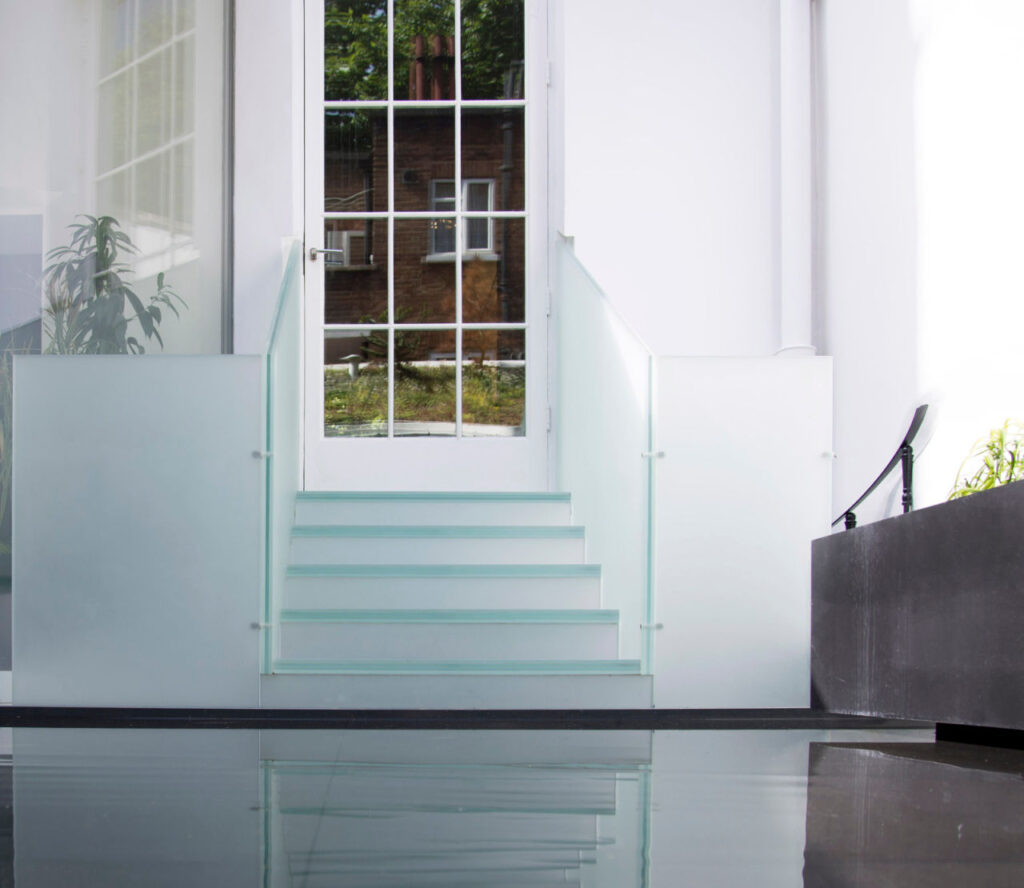
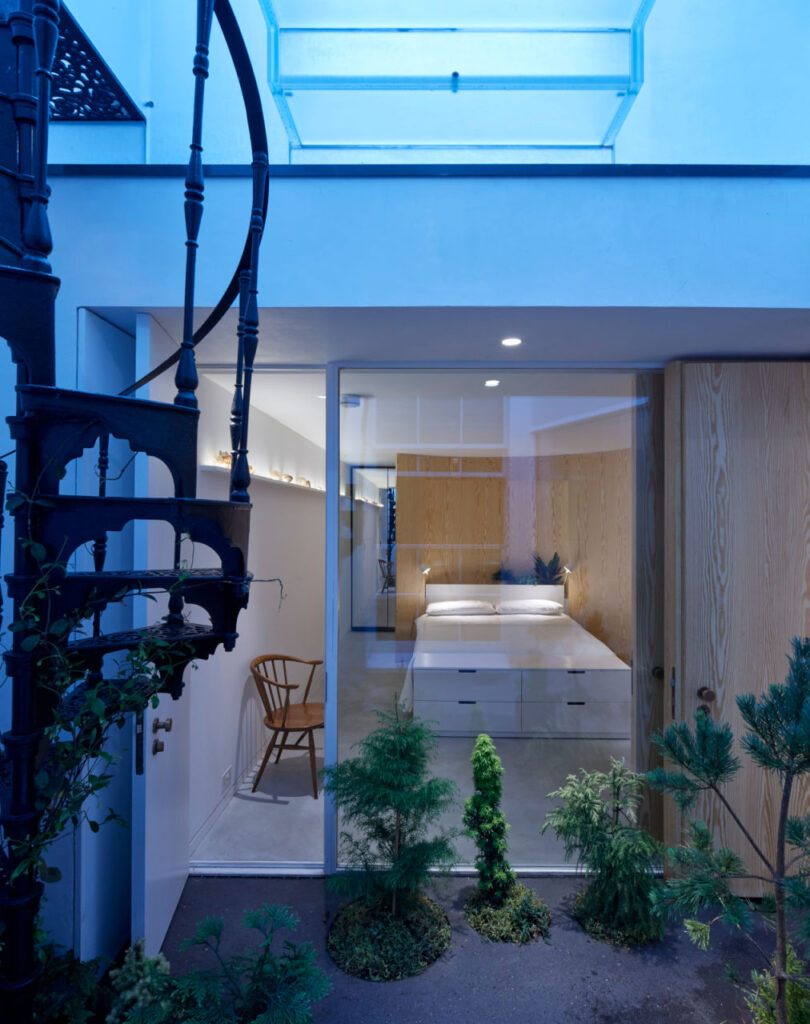
Why you need internal glass doors
Internal glass doors are another feature that we are seeing more of. Once the remit of garden rooms and conservatories, homeowners and interior designers alike are choosing them for their flexibility for both classic and modern features. As well as looking invariably high-end, they let that all important light pass through, without having to compromise on separation (when privacy is required), security and sound control.
With more homes than ever being built open plan, openable or moveable internal glass offer an effective best of both worlds. In shared spaces, such as kitchen-diners or living rooms with a study, as you can keep the fluid connection, but functionally block off a space when needed. Plus, they can be made in such a variety of options. From retro Crittall style to fully frameless glass, architects are choosing internal glass doors, for fully open-plan designs, but also for more compact, traditional homes, as the movement of air and light makes each room appear bigger and less boxed in than with wooden doorways.
Glass stair railing: the perfect design for smaller spaces?
In smaller homes or rooms, space is at a premium and bulky stair railings can dominate the view, as well as block the light. A glass stair railing is an ideal solution for such a situation, as it will provide a clean, spacious feel, by removing any non-essential visual barriers and enhancing the natural light flow, especially if used in conjunction with a large window nearby.
From a purely aesthetic perspective, a glass stair railing can offer a striking blend of safety and style. With the bespoke nature of staircase construction, the railing can be tailored to suit any room, from minimalist metal framework, to a frameless style that lets the rest of the room take centre stage.
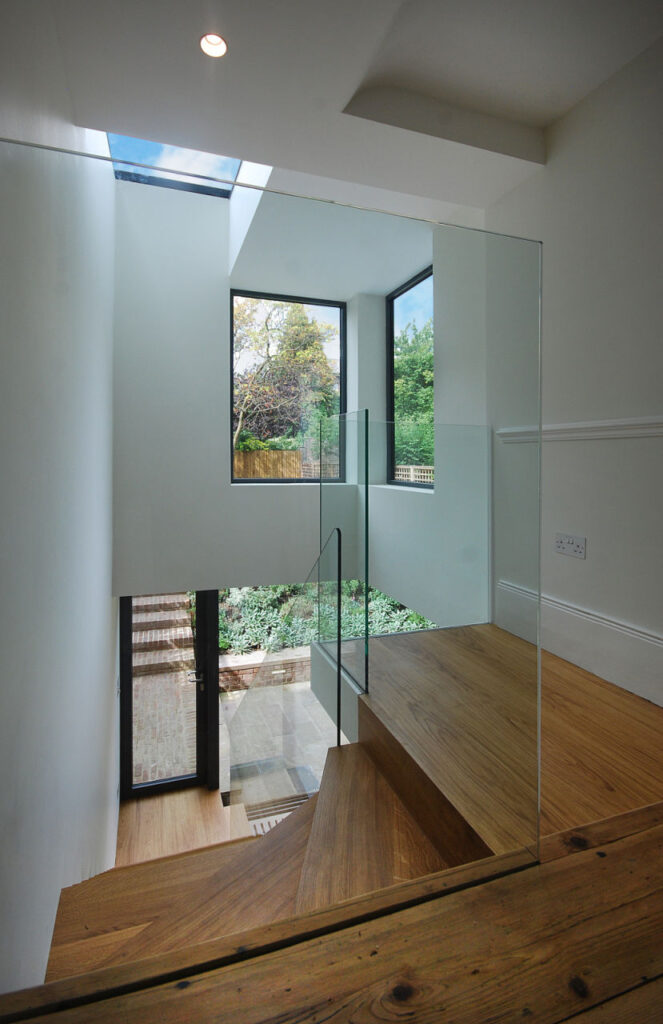
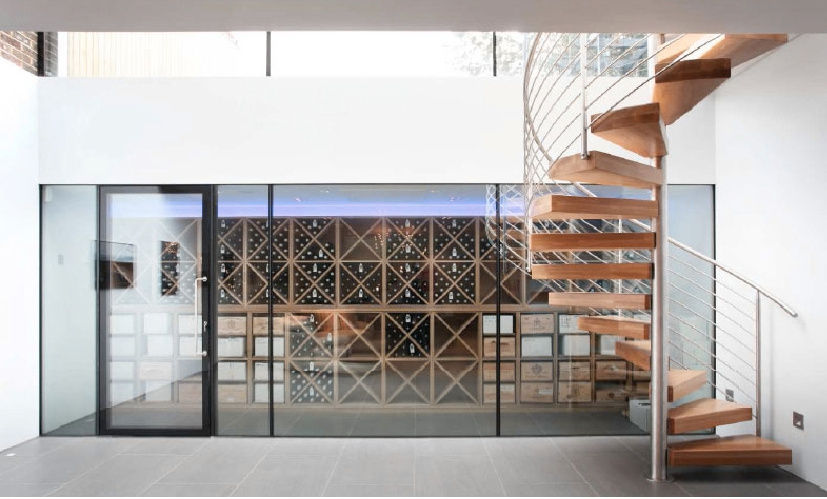
Is internal glazing safe?
When using glass as a replacement for traditional building materials, safety is always a concern, especially when used within the home. Fortunately, there have been so many advances in glazing construction and innovation, and there are so many safety standards that glass products have to meet, that you can rest assured that any internal glazing has been engineered to be exceptionally robust, making it perfectly safe, even in high traffic and family orientated areas.
The majority of internal glass installations, such as balustrade glass, internal glass doors and glass stair railing, are created with toughed safety glass, laminates and sacrificial glass layering. These materials are specifically designed to withstand wear and tear and direct impacts far beyond that of standard glass. In the rare events of a breakage, they are also made to shatter in a way that absolutely minimises the risk of injury and will have mechanisms to aid in structural integrity if they are used as part of the building itself. They can also be created with other technology included, such as advanced locking and alarm systems, bomb and fire proofing and even health promoting properties, such as UV filters if the room is exposed to a lot of daylight.
When properly designed and professionally installed, internal glazing can even outperform traditional construction methods and materials, purely because of the attention to the concerns that people have with glass products. Features such as smoothed edges, secure fixings, anti slip finishes for stair applications also further enhance the safety of the glazing, ideal for homes with children and pets, and giving peace of mind to the homeowners themselves. Always ensure the glass used complies with British safety standards, such as BS 6206 or BS EN 12600, and is installed in accordance with building regulations.
We hope that we have given you a thorough understanding of why internal glazing is so much more than a design trend. In its myriad options, it can be a practical, elegant solution to homes and buildings of all sizes and styles. When updating your house or building your forever home, choosing the right internal glazing is an investment in the quality of life held within. In today’s world of working from home, exposure to natural light and clean open spaces that are thoughtfully designed with human-use in mind, are more important than ever.
If you want to discuss a project with us, or chat to one of our experts about which glass option would work best for you, get in touch. We’d love to hear from you.
